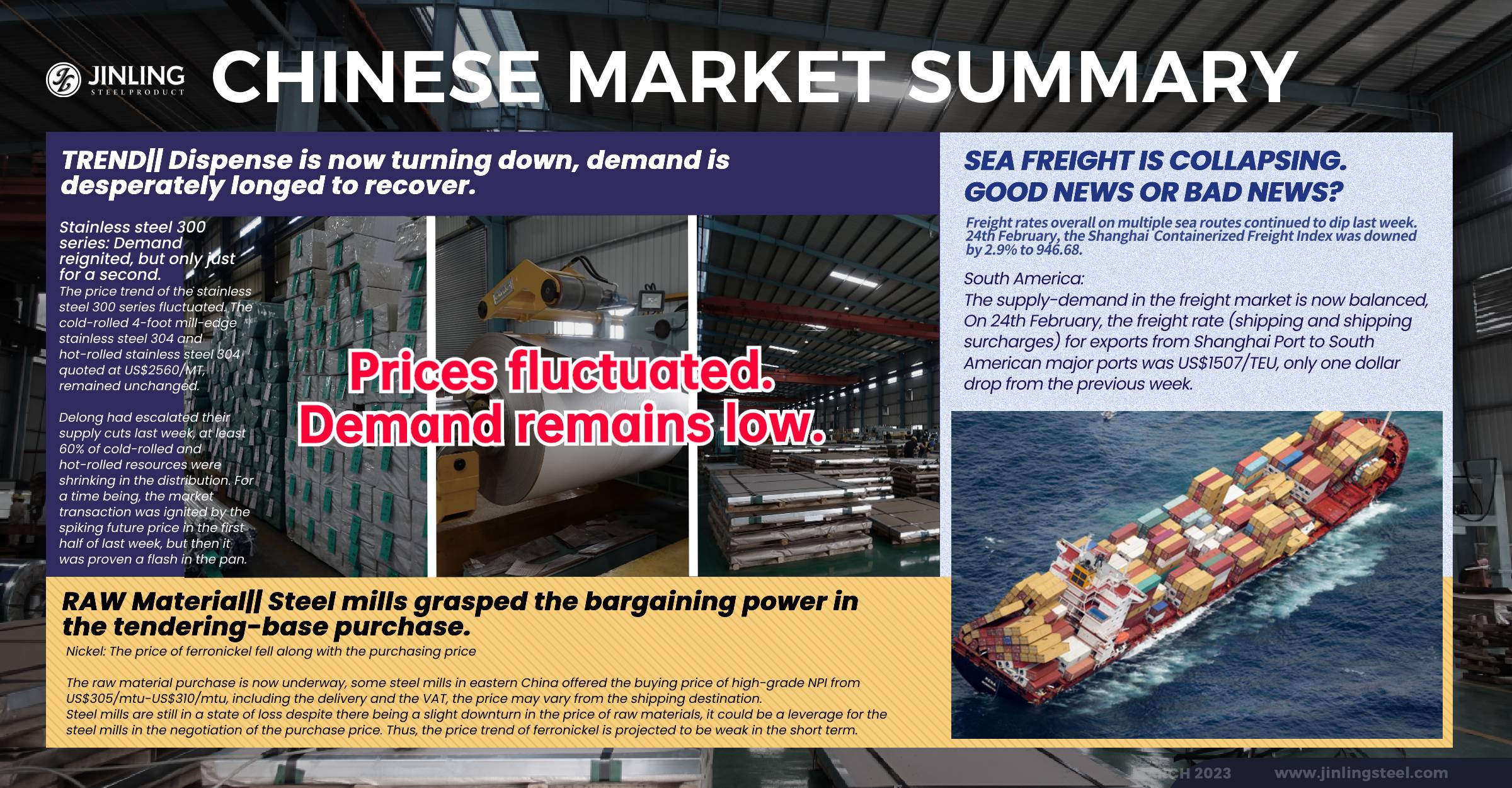Same old topic. The demand remains sluggish. The stainless steel prices of last week struggled to remain unchanged. The spot inventory remains large, stressing the market out. However, on the raw material side, the high production cost supports the stainless steel prices to hold. It is a dilemma that the steel mills are facing. They have told the market for a long that they will reduce the output to resist this muddy situation. Suffering from the tepid global demand, the shipping industry also faces a tricky state quo that is contradictory to its brilliance two years ago. It is ironic to think that back to the worst pandemic disruptions, some of our overseas buyers had paid as much as over US$20,000 to move a container (FEU) of goods and it was in September 2021. Keep going for our Stainless Steel Market Summary in China, please roll down for more details.
